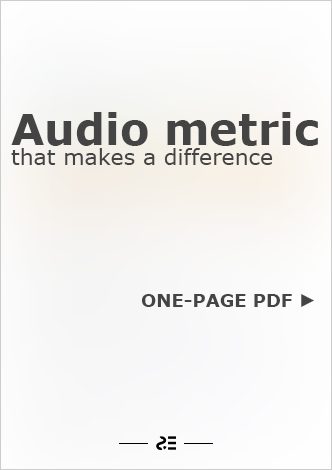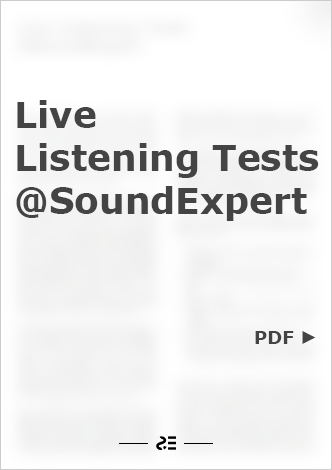What is SoundExpert
 SoundExpert (SE) is an independent non-commercial audio research project, which provides audio quality ratings of sound equipment and technologies such as mp3, aac, wma ... encoders and portable players (to be extended). It is the home for innovative music-based audio metric which works both for objective audio measurements and for listening tests. SE is in beta state because the new audio metric and corresponding listening test design are not widely adopted by audio engineers. So, please, use our ratings with caution.
SoundExpert (SE) is an independent non-commercial audio research project, which provides audio quality ratings of sound equipment and technologies such as mp3, aac, wma ... encoders and portable players (to be extended). It is the home for innovative music-based audio metric which works both for objective audio measurements and for listening tests. SE is in beta state because the new audio metric and corresponding listening test design are not widely adopted by audio engineers. So, please, use our ratings with caution.
The new listener-centric audio metric allows to perform objective audio measurements using real-life music material and various technical signals, not only sine waves. Such measurements:
• correlate well to human perception of sound quality
• are valid for digital audio
• do not contradict traditional audio metric but extend it
• are understandable to people without technical background
• can be performed at home using any recording device
The first practical application of the new measurement method can be found on the Portable players page.
The new listening test design helps to hear sound artifacts which are normally beyond threshold of human perception. The core of the new design is sound artifacts amplification technology (SARTAMP), which is backed by the new audio metric. Such amplification is particularly important for testing high-bitrate encoders and high quality audio equipment. This technology is used in SE listening tests since 2005. The tests are blind - participants don't know the particular device they assess. Resulting quality scores are completely unbiased and free from marketing and advertising noise.
 The ratings of encoders are computed in real time while participants of the listening tests send their grades to the rating system. The more participants - the more devices and technologies can be tested. The testing procedure is simple and short enough that anyone, including you, can participate. Just download a test file (<3Mb), listen it (<15s) and send back your grade. Details are in the test file. The more accurate grades - the more reliable ratings.
The ratings of encoders are computed in real time while participants of the listening tests send their grades to the rating system. The more participants - the more devices and technologies can be tested. The testing procedure is simple and short enough that anyone, including you, can participate. Just download a test file (<3Mb), listen it (<15s) and send back your grade. Details are in the test file. The more accurate grades - the more reliable ratings.
Detailed but still easy to understand overview of SE distributed listening tests is in the paper Live Listening Tests @SoundExpert.
* * *
The main idea behind SoundExpert project is consumer control over sound quality of various audio equipment and technologies on the market. Production side deserves clearly defined feedback from consumers.
Articles
The big beautiful diffrogram utility is on GitHub now - https://t.co/A6LFfIwEoB pic.twitter.com/K7biRjcIak
— SoundExpert (@SoundExpertOrg) July 3, 2025
The diffrogram utility (Matlab) v3.35 with updated manual and verification vectors - https://t.co/7SZKXYHLVP
— SoundExpert (@SoundExpertOrg) June 14, 2025
Diffrogram is a simple tool for rigorous audio research; explained - https://t.co/Xkg63czvBW pic.twitter.com/i3tP5D8PQP
— SoundExpert (@SoundExpertOrg) June 9, 2025

